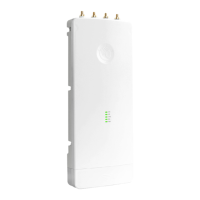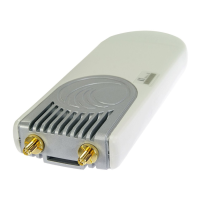CHAPTER 3: SYSTEM PLANNING
PAGE 3-32
Link planning
This section describes factors to be taken into account when planning links, such as range, obstacles
path loss and throughput.
Range and obstacles
Calculate the range of the link and identify any obstacles that may affect radio performance.
Perform a survey to identify all the obstructions (such as trees or buildings) in the path and to assess
the risk of interference. This information is necessary in order to achieve an accurate link feasibility
assessment.
Path loss
Path loss is the amount of attenuation the radio signal undergoes between the two ends of the link. The
path loss is the sum of the attenuation of the path if there were no obstacles in the way (Free Space
Path Loss), the attenuation caused by obstacles (Excess Path Loss) and a margin to allow for possible
fading of the radio signal (Fade Margin). The following calculation needs to be performed to judge
whether a particular link can be installed:
capabilityseasonalfadeexcessspacefree
LLLLL
_
Free Space Path Loss (dB)
Fade Margin Required (dB)
Equipment Capability (dB)
Free space path loss is a major determinant in received (Rx) signal level. Rx signal level, in turn, is a
major factor in the system operating margin (fade margin), which is calculated as follows:
System Operating Margin (fade margin) dB = Rx signal level (dB) Rx sensitivity (dB)
Thus, the fade margin is the difference between strength of the received signal and the strength that the
receiver requires for maintaining a reliable link.

